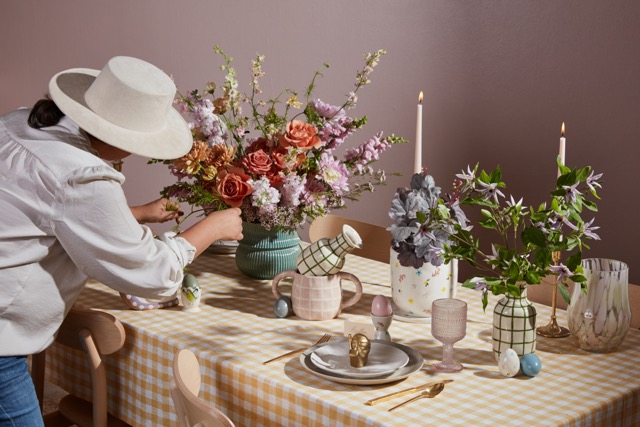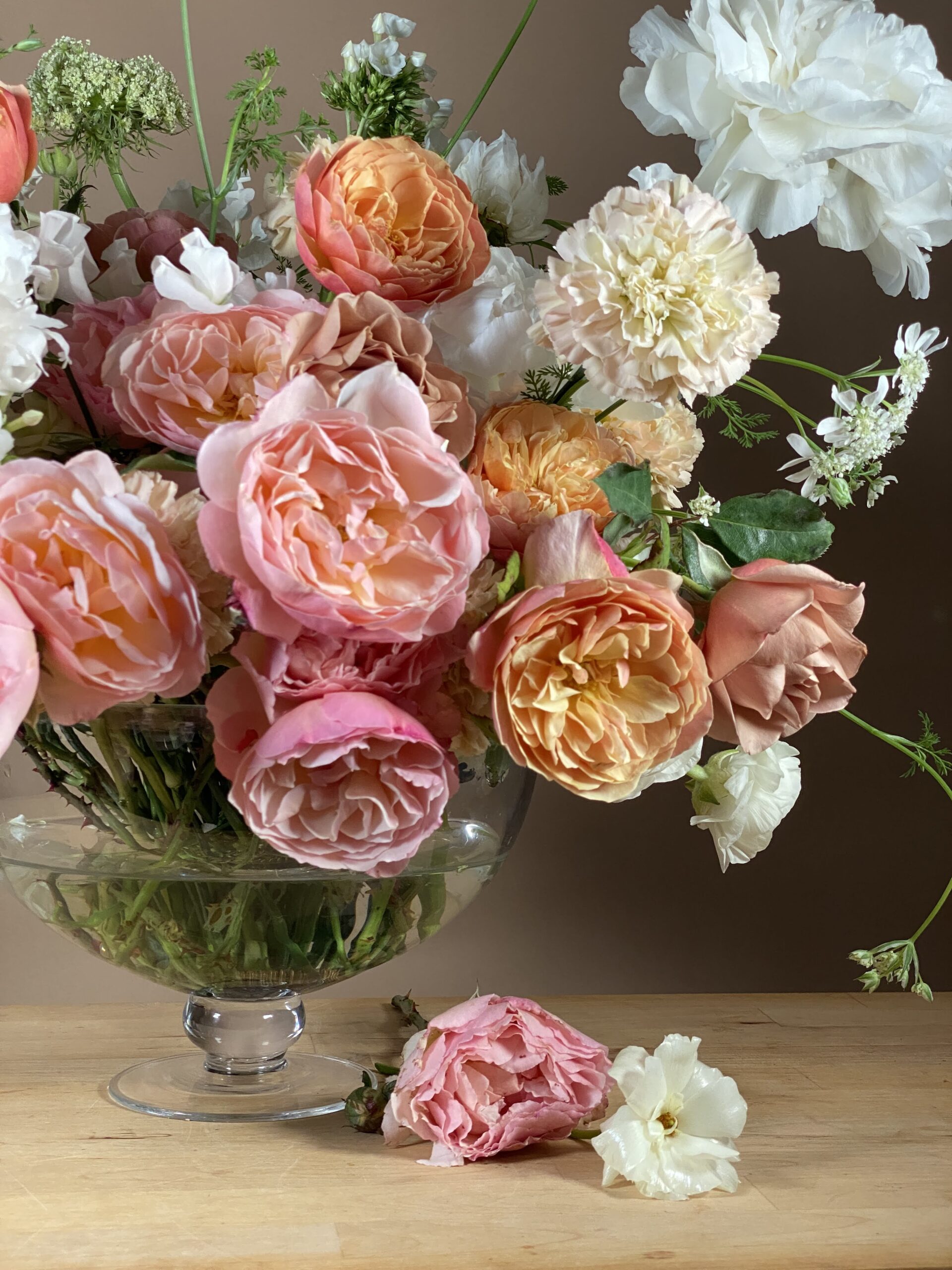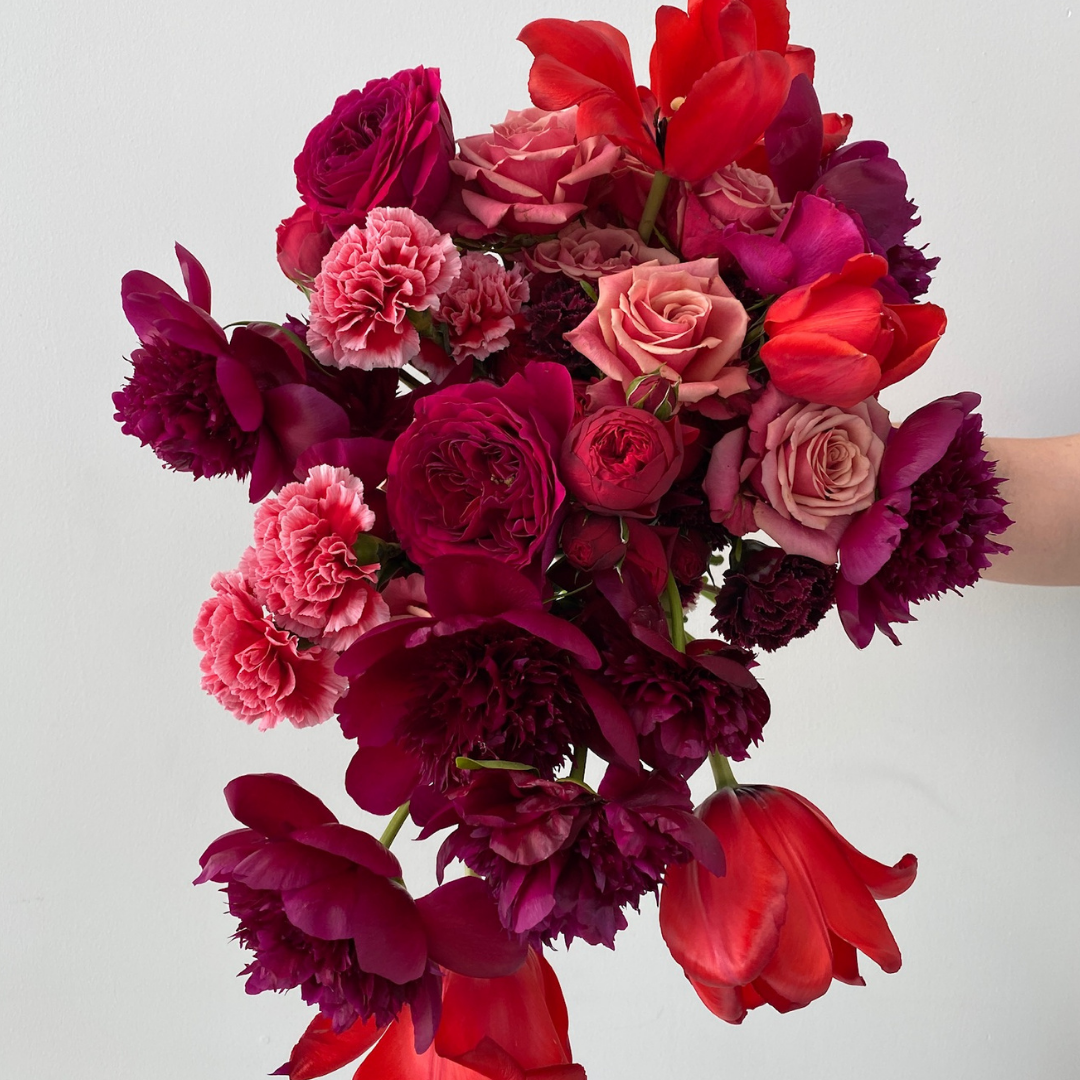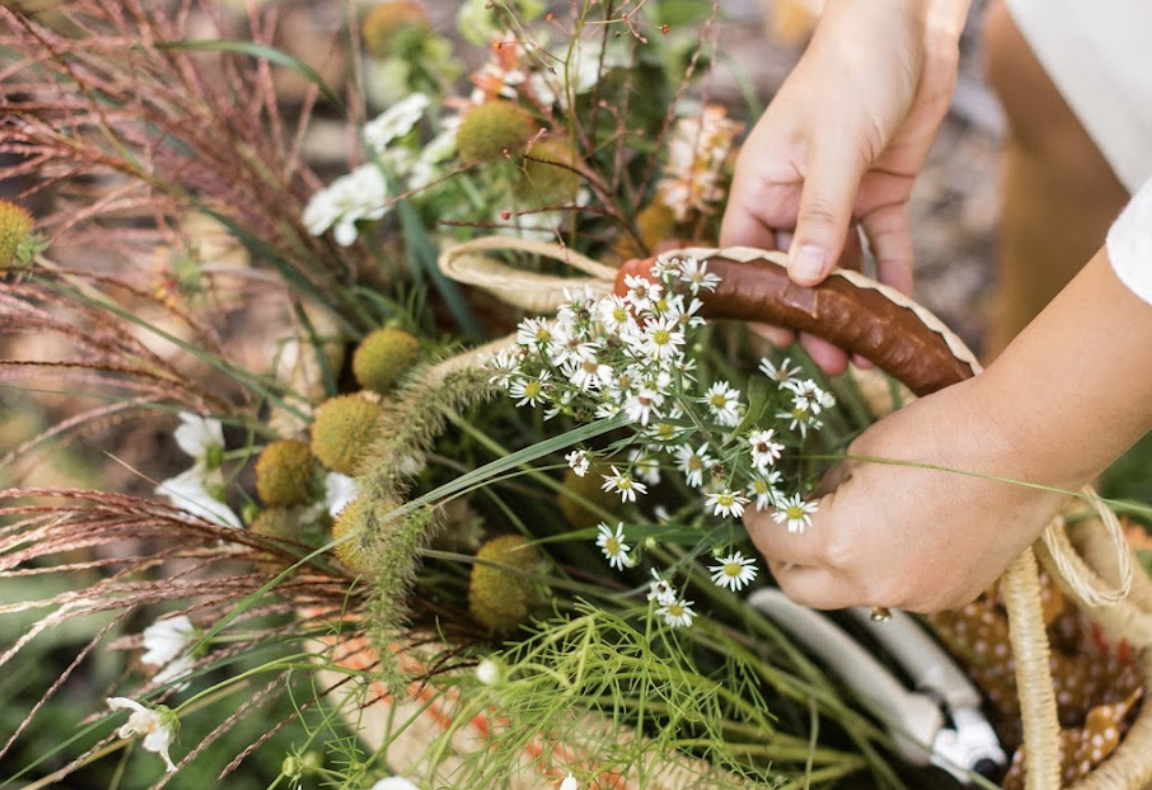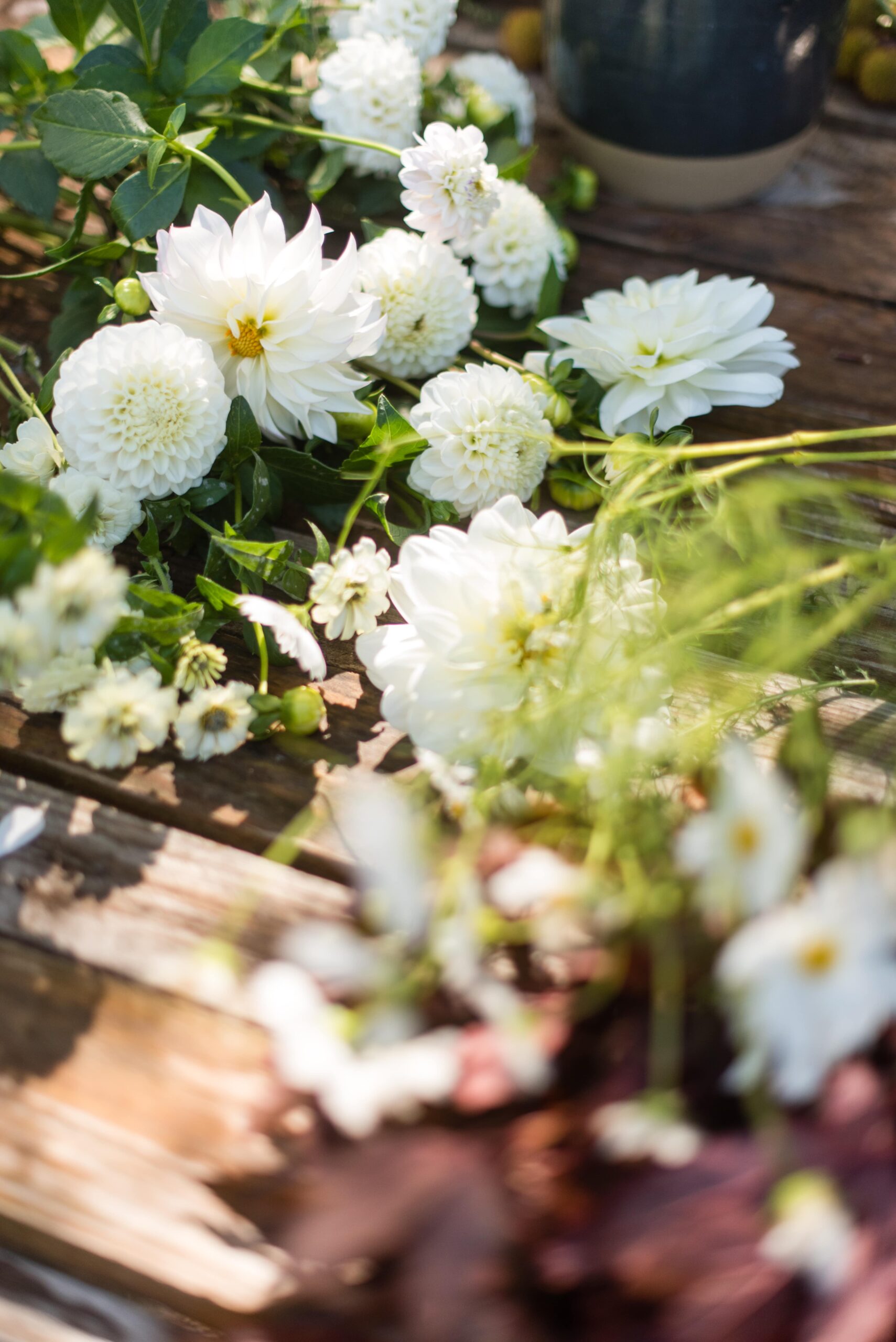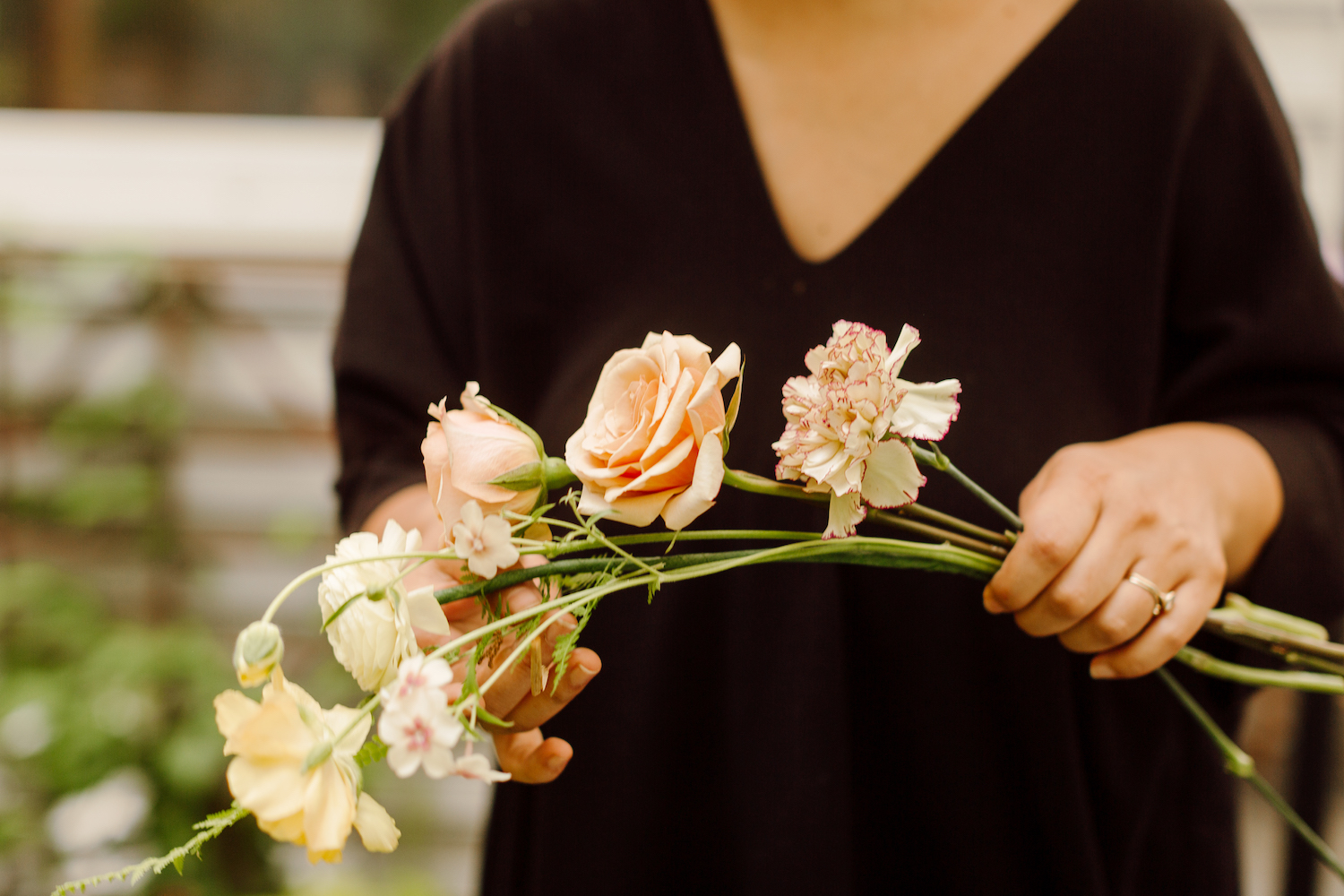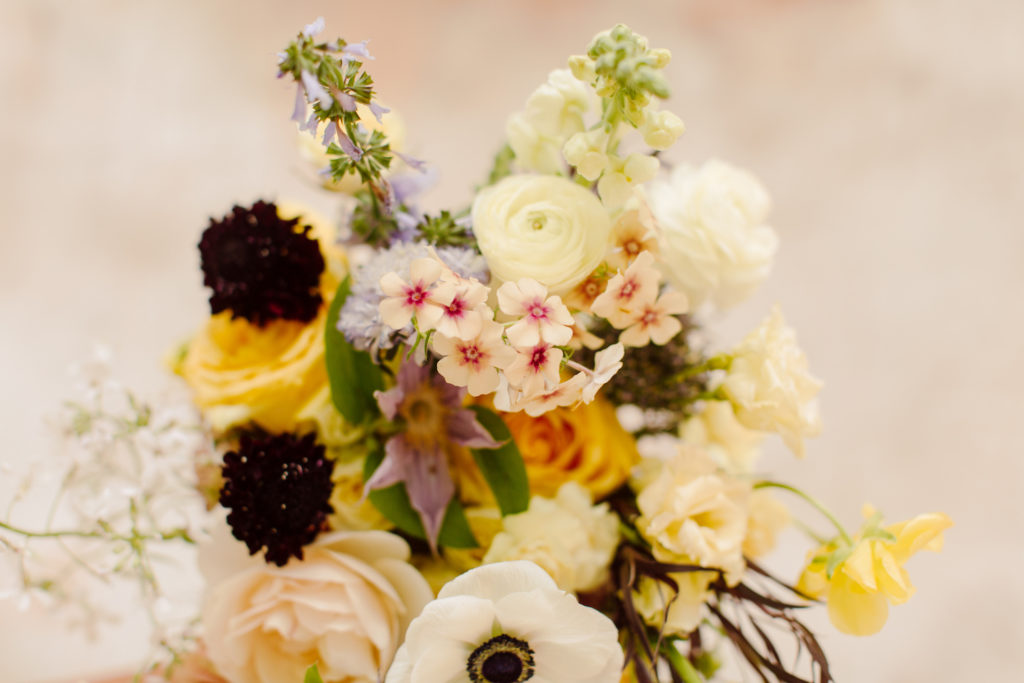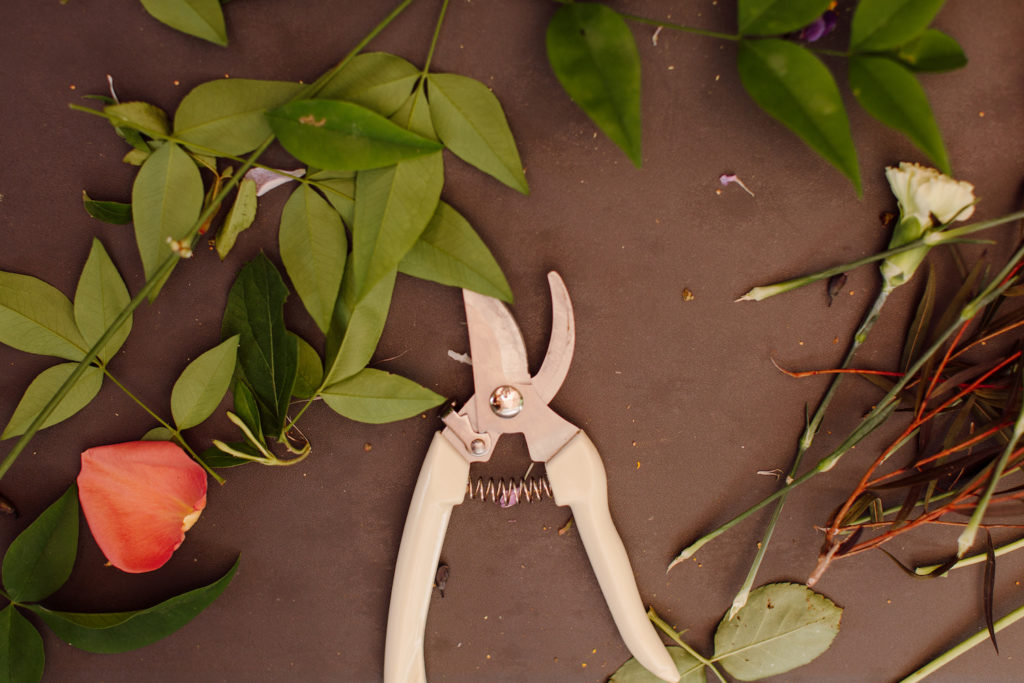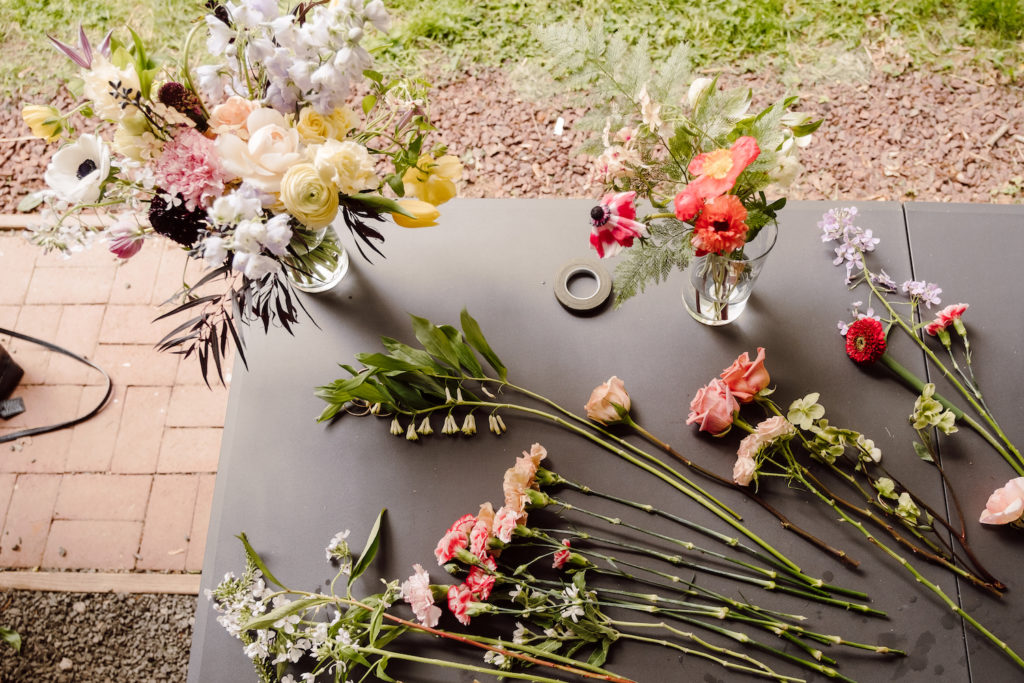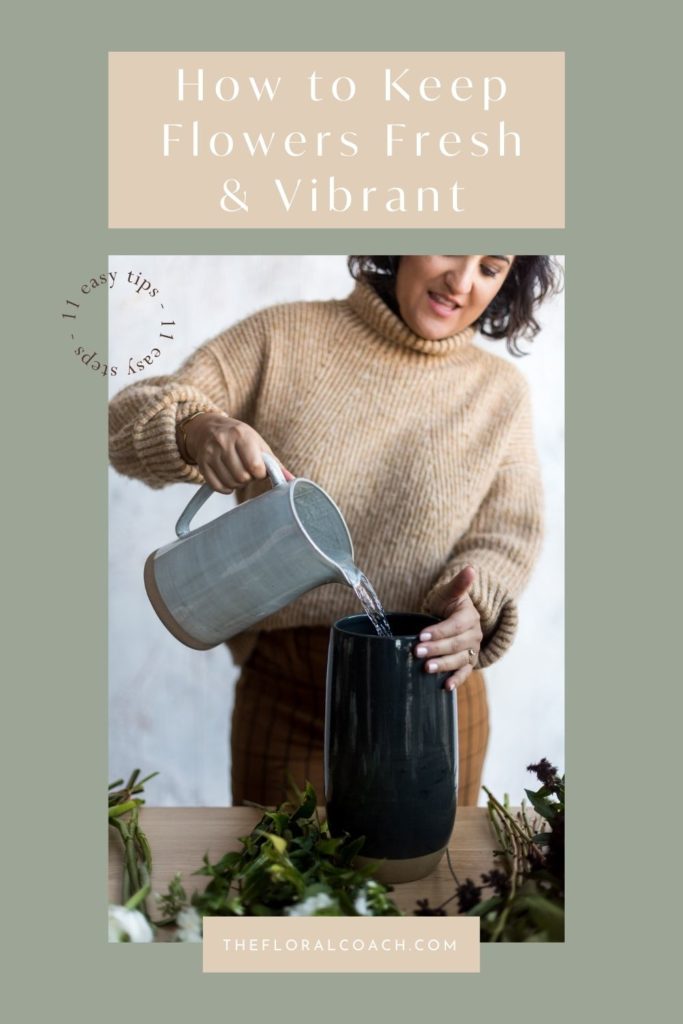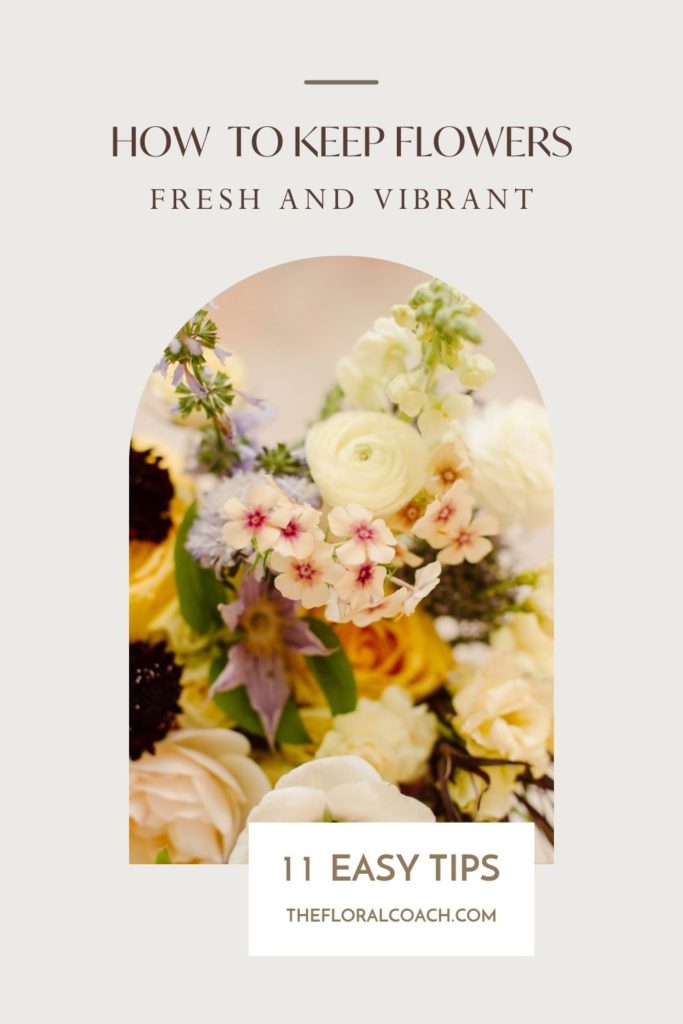How to Keep Flowers Fresh and Vibrant (11 Easy Tips)
Here’s How to Keep Your Flowers Fresh and Full of Life
Creating and designing flowers is the part of floral design that we are often drawn to but the knowledge to keep flowers alive is another skill. Maybe not as sensational as the design aspect of creating floral arrangements but equally important, conditioning flowers when they come in and keeping them alive with excellent care and handling techniques makes your flowers last longer and allows for more successful designs.
The joy of flowers is their ephemeral nature of the most common phrases I hear when speaking about flowers is not how lovely or artfully arranged they are but “how long will they last”?
Can you relate? Read on!
#1 – Re-Cut Your Stems
When fresh flowers are separated from their plant, they create a type of seal to prevent nutrient loss and protect the stem from losing more water and hydration. Before you place a stem into water, recut roughly 1 inch off the stem to remove any trapped air and allow the stem to take up a big drink. Let the flowers hydrate for a minimum of an hour before beginning to arrange with them. When you have stems out of water or laying on tables and place them in water without recutting them, they won’t drink as well so remember to RECUT those stems each time they are out of water.
I use sharp floral shears in different aspects of design but the ideal method to cut flowers is with a sharp clean floral knife. Working with a knife makes you more efficient and doesn’t crush or pinch stems as you cut. It also makes quick work of removing thorns and excess foliage from stems. If you want to learn, I highly recommend it as an important skill in floristry and you can learn how to right here in this video.
#2 – Select the Right Vase or Bucket
Selecting the right vase or bucket size can impact the longevity of flowers. If flowers are crammed too tightly in a narrow vase, they don’t have any air circulation and their stems might be prohibited from drinking water easily. The stems of a vase might also be too tall and bend or break as their heads aren’t well supported.
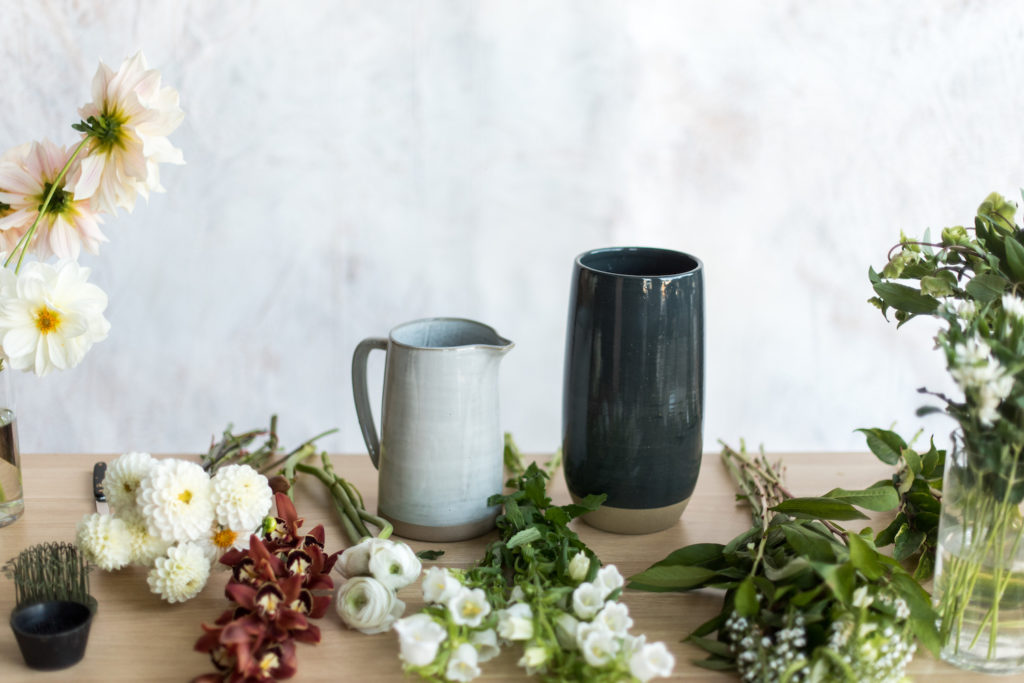
As you select your vase, be mindful of the height and width to allow air circulation around the blooms. This will help flowers condition more effectively and precent bacteria from transferring if there is damage to some blooms. Choose a vase that supports the neck of the flowers well without dipping below the lip of the vase. Check out my video explaining how to choose the right bucket for conditioning and hydrating your blooms!
#3 – Remove Foliage and Pull Dying Flowers Out
Any leaves or plant material below the water line of a vase or bucket will lead to bacteria growth in the water and harm the flower life of the arrangement. When you first get flowers home or to your studio, process your flowers by removing any leaves below that will be below the water line of your bucket or vase. #cleancleancleanclean Here is a video of how I generally process flowers.
Flowers in arrangements will die at different times and as they die, they release ethylene gas which is harmful to other flowers so when flowers wilt or die, remove them promptly and compost or dry them separately from the arrangement.
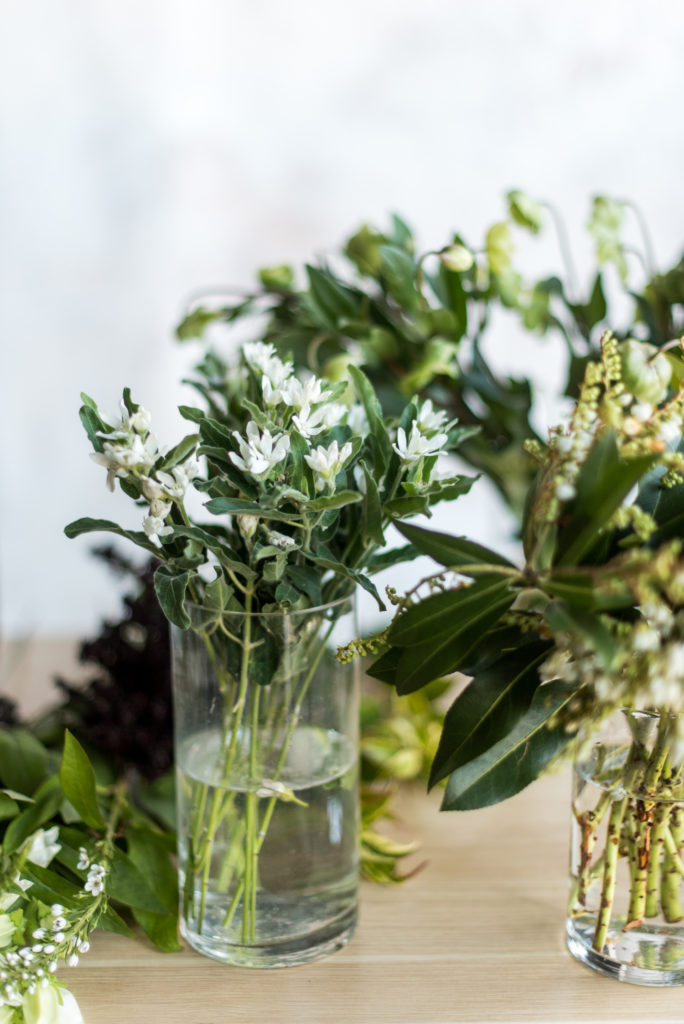
#4 – Keep Your Tools and Surfaces Clean
Bacteria on your tools and surfaces transfers to flower stems and stem ends and can effect the vase life of your flowers. You can use Floral Cleaner by FloraLife, DCD, or just soap and water on your tools as an option but clean your tools often and especially before processing fresh flowers.
Remember, #cleancleancleanclean!
#5 – Use a Clean Vase + Change Out Water Periodically
Dust, mold and debris can quickly kill flowers so ensure that any vessel you use has been well cleaned. You can use DCD as a protectant against bacteria growth as well. Be sure to wash out vases with hot water, soap, and rinse it well before filling it with fresh water to place your flowers in to.
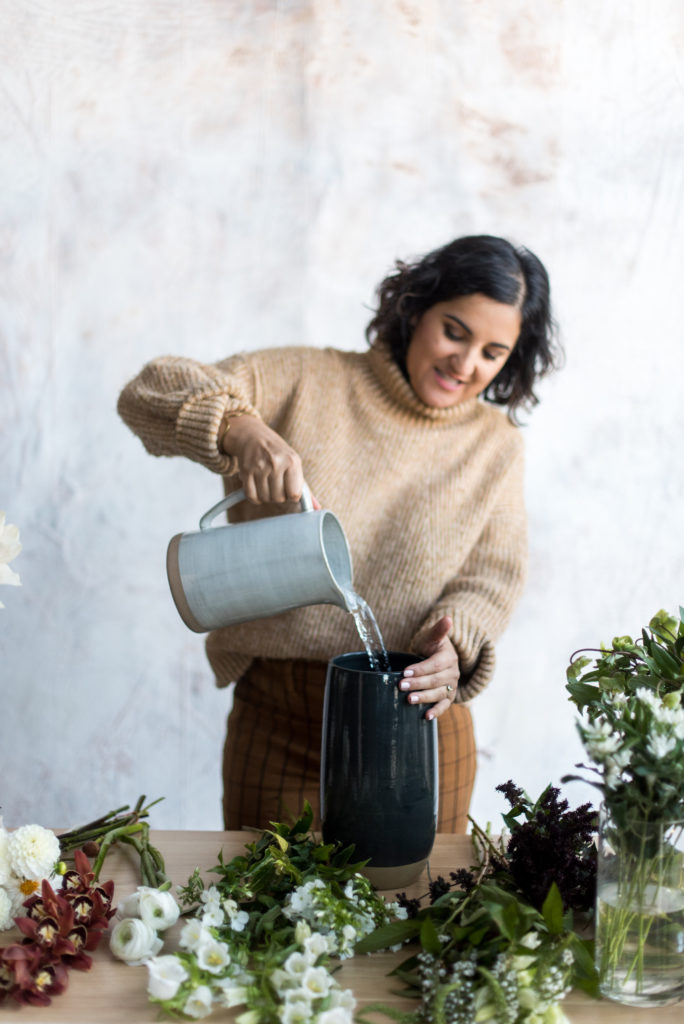
Change the water regularly and clean out any leaves that may fall into the water. Every 2-3 days, remove the flowers if you can from the vase or bucket and give a fresh angled cut at the bottom of the stems and place back into fresh water. I know this step may cumbersome but can greatly increase the longevity of flowers.
#6 – Use Flower Food
Some event florists and retail florists don’t use flower food and just use fresh water and the freshest product they can find which works great. If you are trying to extend the life of your flowers, feeding them can help keep the water clean and feed the flowers. Using flower food is not required but can be another layer of support to your product to extend the life. I like using Chrysal liquid flower food in cool water when I process my flowers or just simply using a bleach tablet from Chrysal which prevents bacteria growth and can make quote a difference in
#7 – Spray Your Flowers
Flowers can drink through their stems, leaves and petals so spraying your flowers with a light mist can help hydrate them. After arranging, I will also often use a product called Crowning Glory or Finishing Touch which are anti transpirant sprays and helps prevent flowers maintain their turgidity or hydration.
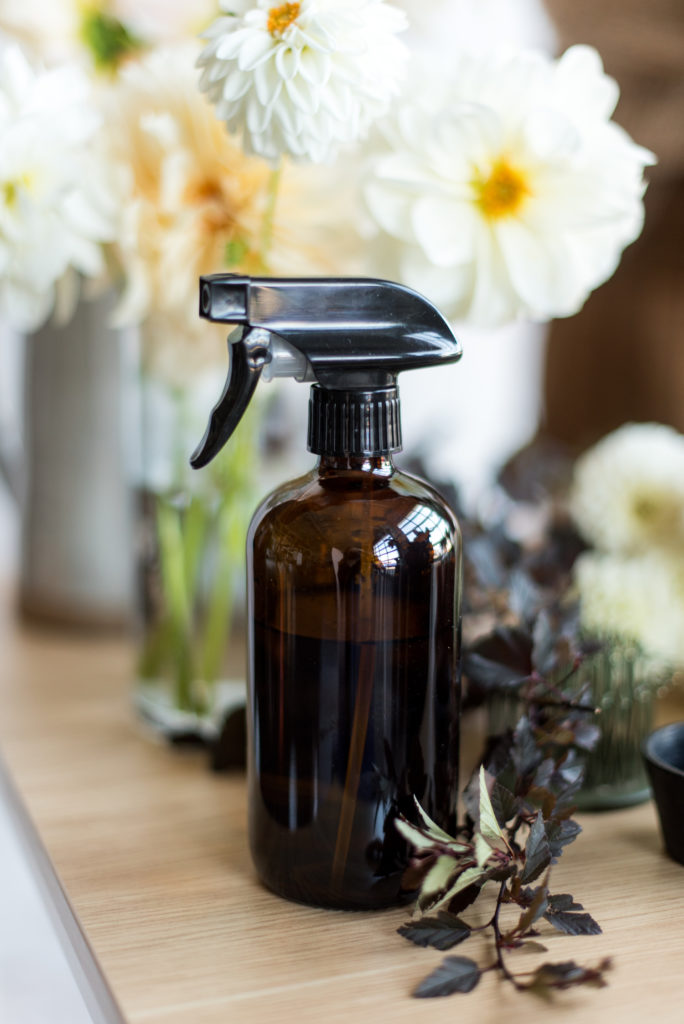
#9 – Keep them Cool
Heat, humidity, sunlight and drafts can harm flowers and make them wilt sooner so keeping them cool and out of direct sunlight is key in keeping them alive longer. If you have a floral cooler, set the temperature to 38-40 degrees. Regular refrigerators can help extend the life of flowers but refrigerators made for food and beverages typically remove humidity versus floral coolers that maintain or even add humidity. If you do use a non floral refrigerator, keep your flowers covered if possible with a wet paper towel or in a plastic covering/bag or container after spraying with water so they don’t get too dried out if they are being held for a long period of time. Also keep your flowers away from fruits and vegetables as they also release ethylene gas and can be harmful to flowers.
#10 – Dunking Flowers
Some flowers love a good dunk in the water if they are wilting. Simply fill a large clean bucket or basin/tub and fill it deep with water, no flower food needed, just clean water. Dunk the entire head of the flower under water and stem if possible and leave for an hour, longer if needed. Remove from water, shake the head out gently to remove excess water, recut and place in a vase of water. This technique doesn’t work for all flowers but works very well with tropicals like orchids and anthuriums, hydrangeas and hellebores
#11 – Keep Learning
Care and handling of fresh flowers comes with practice, experience and research! Check out gardening blogs, care and handling books, online articles and more. Facebook groups for farmers, florists and gardeners can also be a very useful place to ask for advice when you feel stuck as well as asking your floral wholesaler for any tips if you are working with a new product you are unfamiliar with.
Keep in mind that there is some antiquated advice on the internet such as hammering woody stems like lilacs and viburnums which was an old technique. However new research shows that crushing the vascular system of stems doesn’t help with drinking water but rather harms the stem. Woody stems are best handled by processing into warm to hot water and removing the foliage so the stems drink.
How to Keep Your Flowers Fresh and Beautiful
Care and handling of fresh flowers takes time to learn but with some of the steps above, this is a great place to build on your knowledge. I encourage you to dive deeper into this part of floristry that is so important to being a professional.
If you’re looking for more floral tips, here are some additional resources to check out.
Did you enjoy this blog post? Pin it for later…
I think you'll also love reading...

